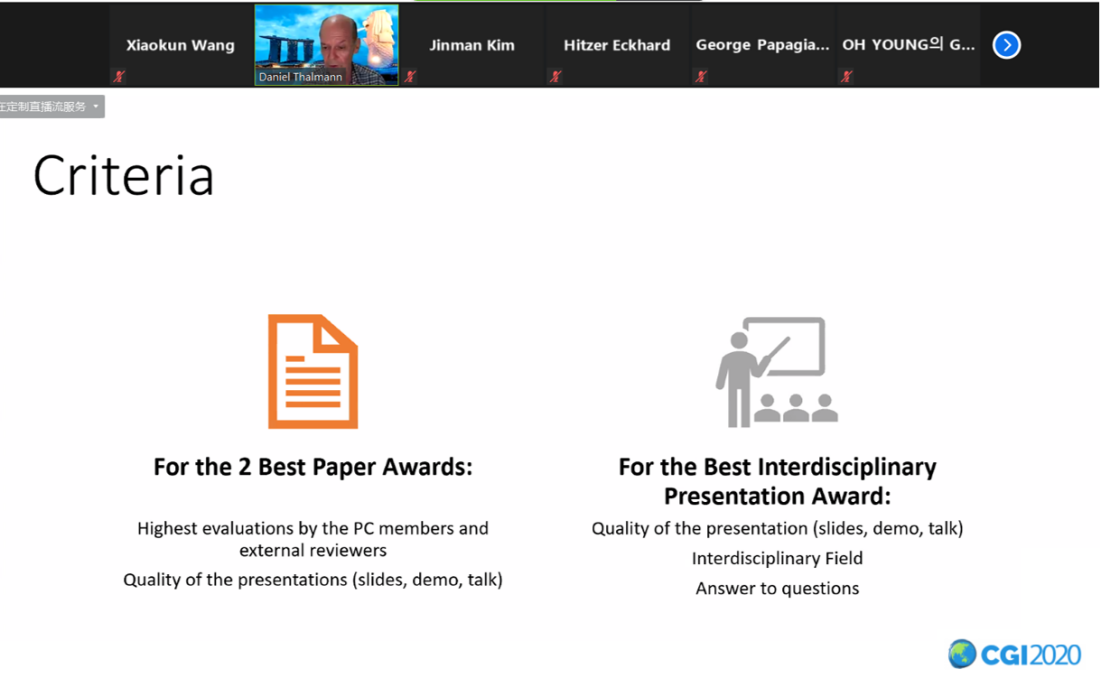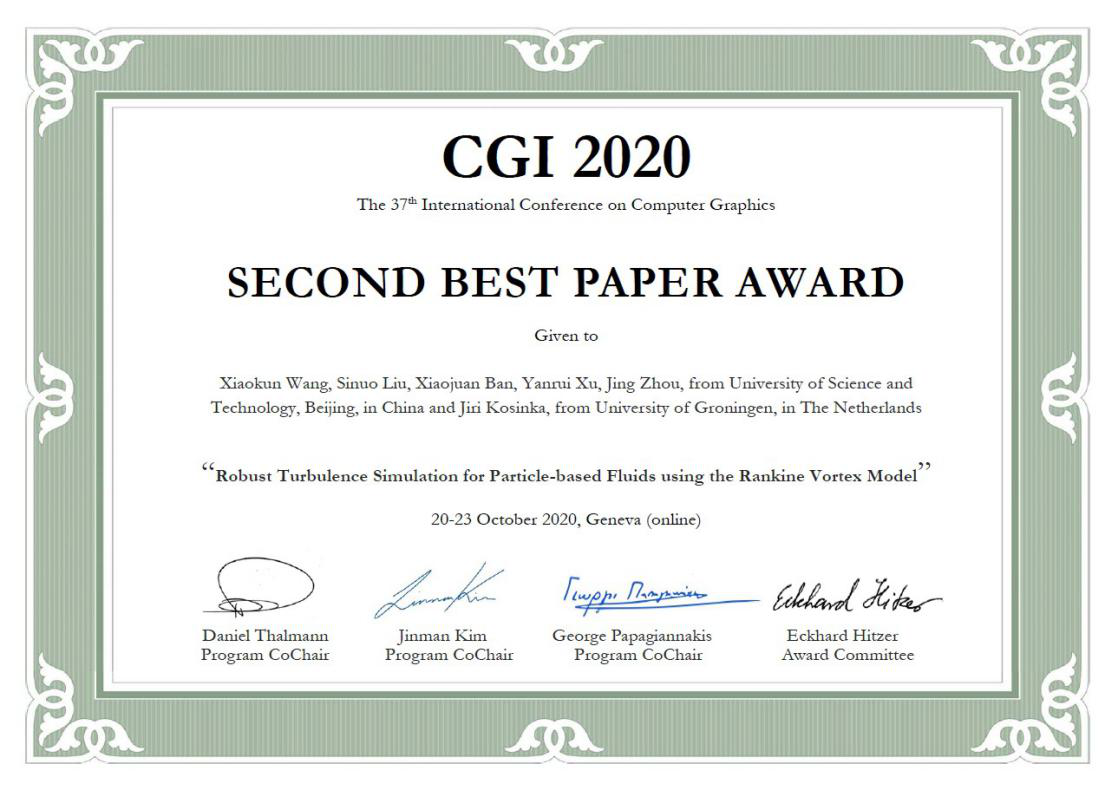Dr. WANG Xiaokun and Others Win the CGI2020 Best Paper Award
Release Time: 2020-11-18Views:
(Source: School of Comupter & Communication Engineering, Institute of Artificial Intelligence)
On October 20-23, 2020, the Computer Graphics International (CGI) Conference was held in Geneva, Switzerland. The paper “Robust Turbulence Simulation for Particle-based Fluids using the Rankine Vortex Model” produced by Dr. WANG Xiaokun, USTB, and LIU Sinuo, a doctoral student of USTB and others won the second place for the CGI2020 Best Paper Award, and was highly praised by reviewers and members of the CGI2020 committee. A total of 90 papers were accepted, of which only 2 won the Best Paper Award.

During the conference, LIU Sinuo and others delivered an oral presentation about robust turbulence simulations based on a vortex model, which was highly praised by the program chairpersons Prof. Daniel Thalmann, Ecole Polytechnique Fédérale de Lausanne, Switzerland, and Prof. Jinman Kim, University of Sydney, Australia. They also praised the proposed method in the paper which “can prevent the positive feedback effect between the velocity and vorticity fields and can recover missing high-frequency details realistically and maintain convergence in both static and highly dynamic scenarios”.


Dr. WANG Xiaokun and his team are part of the Laboratory of Artificial Intelligence and 3D Visualization. The team is leading by Prof. BAN Xiaojuan and has achieved significant results in computer graphics and virtual reality fields. Recently, the team has published a paper about turbulence simulation in Computer Graphics Forum , a leading journal for in-depth technical articles on computer graphics. Additionally, their report delivered at the ACM/Eurographics Symposium on Computer Animation (SCA) 2020 was acclaimed by Prof. Matthias Teschner, University of Freiburg and Prof. Jan Bender, RWTH Aachen University. In the paper they presented a particle-based turbulence refinement method that recovers lost velocity from the difference between the theoretical and the actual vorticity value. Their method not only amplifies existing vortices, but also captures additional turbulence. Their method also can simulate typical turbulent scenes efficiently and is relatively stable even for scenarios with highly turbulent flow.

USTB’s winning of the CGI2020 Best Paper Award indicates the advancement of scientific research achievements of our school in international academic circles. The award also plays a positive role in promoting the international influence of USTB's computer science, artificial intelligence and other disciplines.


